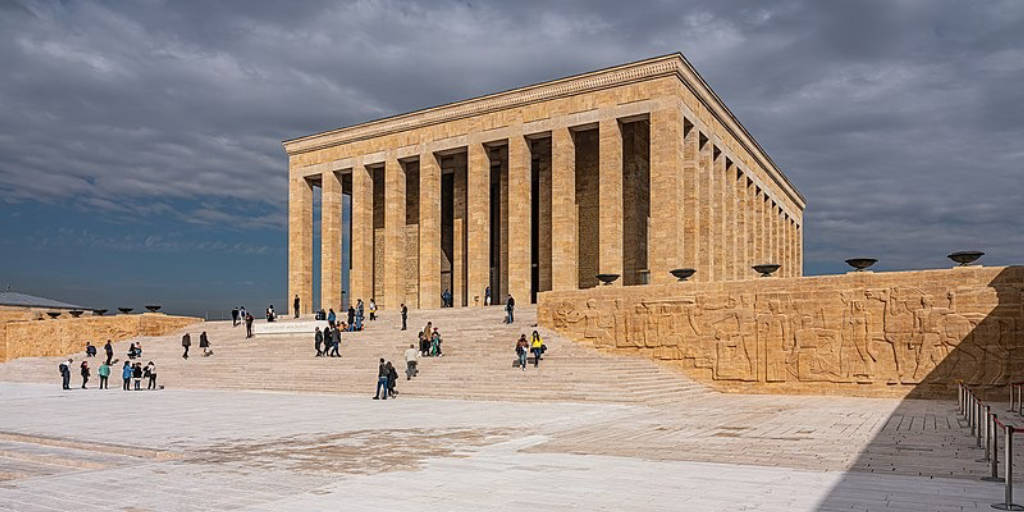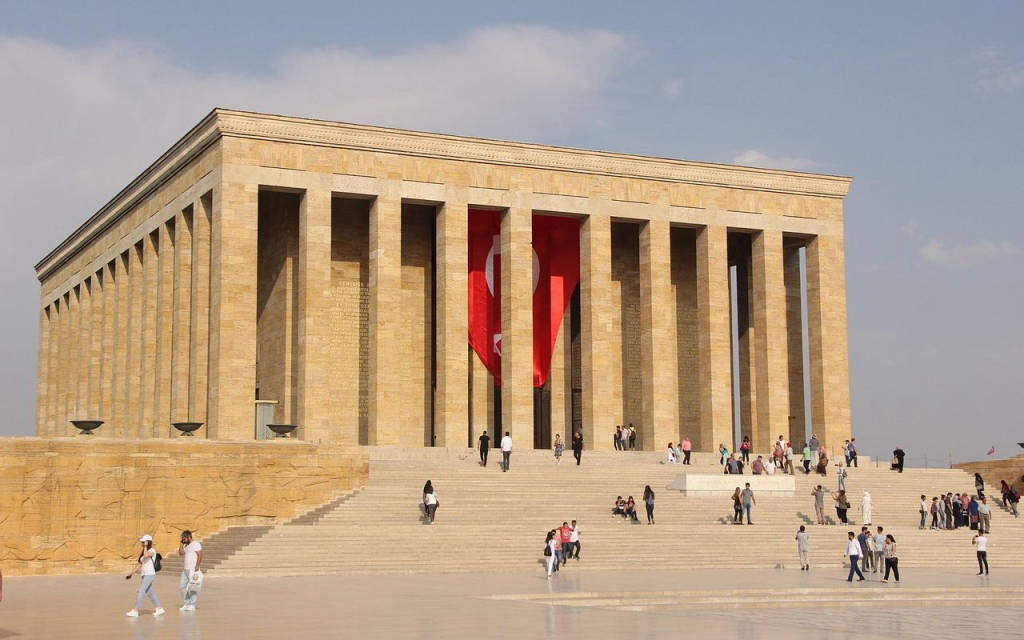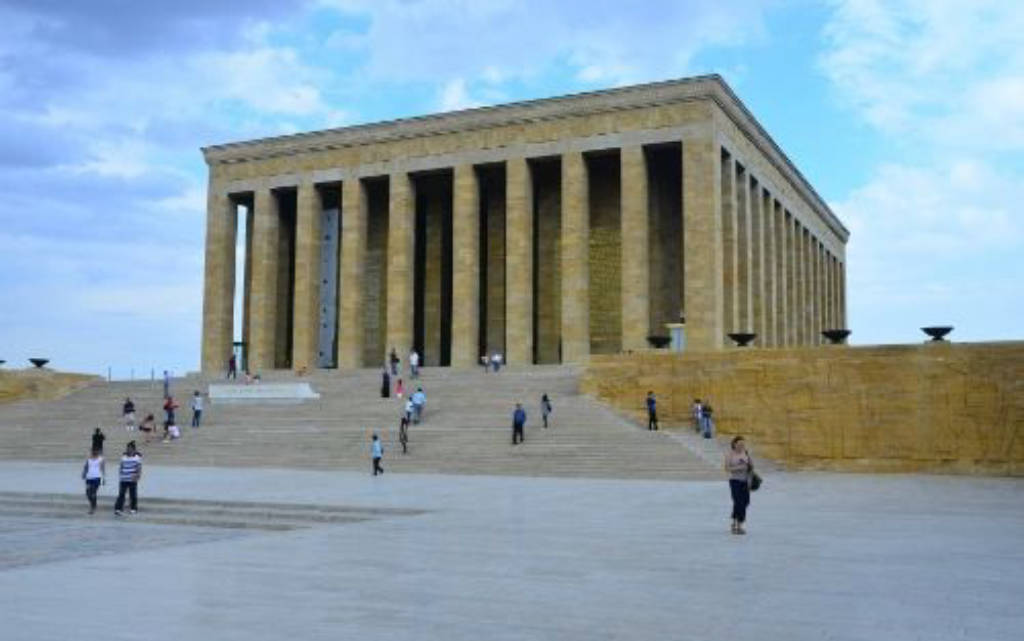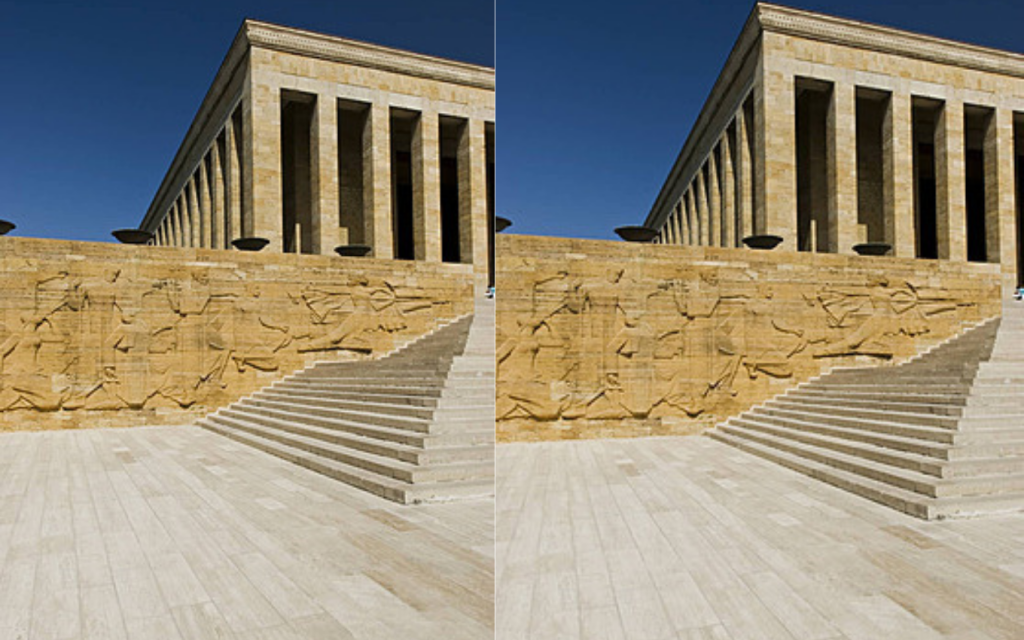Location and Historical Significance
Stepping into Turkey’s capital, Anıtkabir immediately stands out as an unmissable landmark. Positioned prominently on Yücetepe Hill, the mausoleum embodies the aspirations of a nation determined to embrace independence, liberty, and modernization.
Atatürk was born in 1881 and passed away in 1938. After his death, his body was temporarily placed at the Ankara Ethnography Museum while the mausoleum was under construction. Work began in 1944 and was completed in 1953, with a solemn inauguration on September 1, marking a historic milestone in Turkey’s journey.
Architecture and Space
Anıtkabir is the masterpiece of architects Emin Halid Onat and Ahmet Orhan Arda. The architecture seamlessly blends classical styles with Ottoman and Seljuk influences, while integrating modern elements, creating a deeply cultural and nationally symbolic landmark.
The “Road of Lions,” stretching nearly 262 meters, leads visitors to the ceremonial plaza, flanked by rows of imposing lion statues symbolizing strength and protection. The vast plaza can accommodate thousands of people during national ceremonies.
Inside the Hall of Honor, a symbolic sarcophagus weighing approximately 40 tons is placed above the actual burial chamber below the ground floor, with a golden-mosaic ceiling and exquisitely detailed decorations. Surrounding the mausoleum is the Peace Park, filled with tens of thousands of trees and flowers, providing a serene and sacred atmosphere while remaining connected to nature.
Emotional Experience
Walking along the Road of Lions, every step feels like a journey back through history. Every architectural detail – the height of the columns, the intricate mosaics, the spacing of the paving stones – invites visitors to slow down, reflect, and admire.
Entering the Hall of Honor, the soft, solemn light evokes a profound sense of reverence. Gazing at the sarcophagus, one can feel the nation’s gratitude and respect for its leader. Stepping out into the Peace Park, breathing the fresh air, listening to the rustling leaves, and sensing Atatürk’s timeless words, “Peace at home, peace in the world,” creates a deep, contemplative experience that stills the soul amid the rush of life.
Why Visit Anıtkabir
Anıtkabir is more than a historical site; it is a place to understand the man, his spirit, and the journey of building the Republic of Turkey. It allows visitors to pause, reflect, and feel a sense of calm within its grand but understated spaces. It also serves as a bridge between past and present, reminding us of the power of self-determination, national independence, and the enduring spirit of reform.
Practical Tips for Visiting
The best times to visit Anıtkabir are early in the morning or late in the afternoon when the light is soft and the atmosphere is cooler. Modest and respectful attire is recommended, as the site is sacred and deeply revered. Allow several hours to explore the full area – the Road of Lions, the Ceremonial Plaza, the Hall of Honor, the Atatürk Museum, and the Peace Park to fully appreciate the depth and historical significance of the site.
Anıtkabir is not just the resting place of a great historical figure; it is a symbol of faith in the future, justice, freedom, and progress. Standing before the mausoleum, one sees not only the traces of history but also the proud spirit of a nation that has overcome challenges, casting its light into the present from the past. Visiting Anıtkabir is not merely sightseeing; it is a profound connection with values that transcend time.
 Register
RegisterSign in Travel Agent
Sign in Supplier
Sign in Affiliate
Sign in Guru









 Yücetepe, Akdeniz Cd. No:31, 06570 Çankaya/Ankara, Turkey
Yücetepe, Akdeniz Cd. No:31, 06570 Çankaya/Ankara, Turkey